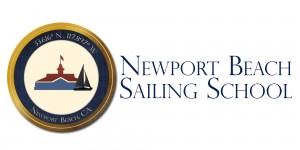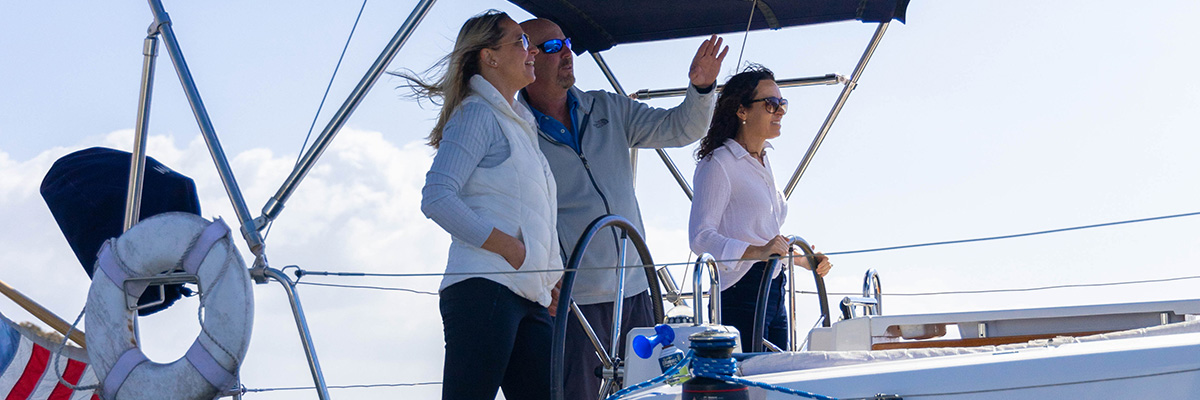ASA 106 – Advanced Coastal Cruising
ASA 106, Advanced Coastal Cruising Course
3-Days / 2-Nights course on a newer Beneteau 41.1 or 45
Course Pricing
This is a 3-day/2-night live-aboard course. You will depart for Catalina on the morning of the first day and return to Newport Beach the afternoon of the third day.
- Group Course: $1550 per person. Total of three students–You and two other students, who we match you up with.
Click here to tell us when you would like to start.
- Private Course 1 Student: $3805 total. A private course just for you, based on your schedule. Click here to tell us when you would like to start.
- Private Course 2 Students: $3905 total. A private course for you and someone you know, based on your schedule. Click here to tell us when you would like to start.
- Private Course 3 Students: $4005 total. A private course for you and two people who you know, based on your schedule. Click here to tell us when you would like to start.
- Private Course 4 Students: $4105 total. A private course for you and three people who you know, based on your schedule.. Please click here to choose your course dates.
Information about the Course
106 Overview
In this course, you will learn to safely act as skipper and crew of a sailing vessel in coastal and inland waters, day or night, in varying wind and sea conditions.
For a full list of all 43 topics (knowledge and skills) plus knots that will be covered in this course, click below.
Prerequisite – ASA 101, 103, 104 and 105
Boat utilized and description – 2016/2019 Beneteau 41.1 or 2015/2017 Beneteau 45
This is an attractive 41 or 45 foot sailing yacht, both designed with 3 cabins and 1 or 2 bathrooms. This is a top of the line cruising model with all of the comforts and features to make learning fun and safe. Features include: Roller furling sails, dodger and bimini, anchor windlass, autopilot, radar, GPS, and color chartplotter.
Boat location – Balboa Marina, Newport Beach, CA
The boat will be docked at the Balboa Marina where our office is located. This marina has some of the best facilities and is one of the best destinations in Southern California. . Some of the features that make this a great location are:
- Ample free parking
- Bathrooms and showers
- Two great restaurants with full bars – SOL Mexican Cocina & Tavern House Kitchen and Bar
- Starbucks across the street
- Gas station and minimart across the street
- Subway across the street
- Kayak and SUP Rentals a block away – Southwind Kayak Center
- Large grocery store, 3 blocks away – Pavilions
- John Wayne (SNA) Airport, 6 miles away
- Several other great restaurants and bars within a mile
- Balboa Island within a mile
- Newport Pier and Balboa Pier within a mile and a half
- Art Museums of Laguna Beach within 10 miles
- Disneyland, 20 miles away
- Numerous hotels and resorts within just a few miles
- The famed Balboa Bay Club, where John Wayne use to hang out, less than a mile from the marina
What’s included –
- ASA 106 textbook “International Marine Book of Sailing”
- Fuel, insurance, and safety gear (including life jackets)
- Mooring fees in Catalina
- Dinghy – 10’ with Honda 2.3HP outboard motor
- High quality bedding (duvet in Fall, Winter and Spring; cotton blanket in Summer) along with fitted sheets and your choice of pillows (exact selection based on availability)
- Comfortable, upgraded mattresses. If you are going to “live” on a boat, you should be comfortable!
- Bath towel, hand towel, beach towel, and dish towels
- Fully equipped galley with refrigerator, sink, oven, stove, pots, pans, dishes, silverware, cooking utensils, glasses, cups and coffee mugs. BBQ outside in the cockpit
- Hot water in the sinks and showers. “No cold showers for this sailor, thank you very much!”
- Stereo with speakers inside the cabin and outside in the cockpit
- The boat is also stocked with 15 disposable items for your convenience. (Click here for a list)
- Cleaning and washing after your stay. It wouldn’t be a vacation if you had to clean up!

